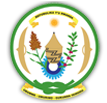Storm Water
Background
Storm water is a subset of surface water resources. Urbanization typically increases runoff rates due to increased impervious areas, and replacement or filling up of natural watercourses and overland flows. Subsequently, high uncontrolled discharge of storm water can:
- Have a significant impact on water quality and public health: storm water runoff can include a variety of pollutants such as sediments, litter, bacteria, organic nutrients, hydrocarbon, metal, oil and grease, pesticides and acids;
- Put people at risk, and cause erosion of land and damages to property and infrastructure.
The objective of storm water management is mitigate impacts on properties, infrastructure,human health, and the environment.
The focus of the storm water strategy in urban areas must be on alleviating existing and preventing future problems through careful design, planning and only complementary drainage networks. Successful affordable management of storm water needs a long-term coordinated approach to integrate best practice as well as community and business involvement and education programmes.
Storm water shall be understood as a resource. Diversion of storm water has a series of advantages, including financial, over traditional approaches to storm water management, which usually gave priority to costly network constructions. “Water sensitive urban design” or “Low Impact Development” (LID) are approaches to urban planning and design which integrate management of the total water cycle into urban development. The approach also includes methods such as porous pavements, infiltration and rain harvesting systems, swale and wetlands, which shall be incorporated in development of new and upgrades of existing infrastructure.
As response, a national taskforce under the lead of the Ministry of Infrastructure shall formulate responsibilities and tasks coordinate the relevant national and district stakeholders, set the objectives and implementation methods, revise or elaborate standards and norms, and develop guidelines for urban storm water management. Additionally the taskforce shall define the terms of reference for the storm water component in urban sanitation master plans considering its correlation with wastewater and solid waste management.
The Planning, design and implementation shall include the following components:
- Risk assessment,
- Best practices for storm water design standards,
- Land use and urban planning,
- Water quality and environmental protection,
- Network capacity and maintenance, and
- Awareness and education which will help people to know that human activities have increasing pollution consequences and other environmental sensitive impacts.

 ENGL
ENGL KINY
KINY